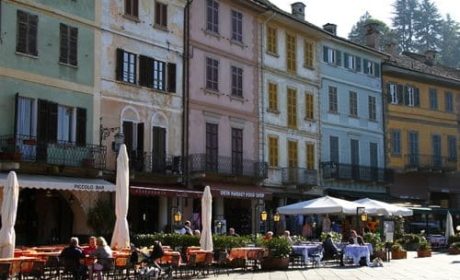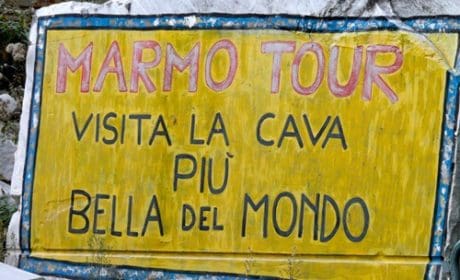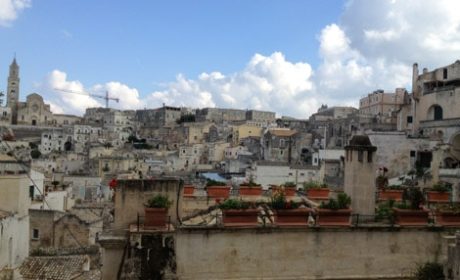There are few things that make our travel feet itchy more than the thought of going off the beaten path in Italy. From road trips through Northern and Southern Italy, to bustling Rome, we’ve featured quite a bit about one of our favorite European countries.
But today, guest contributor, Sharon Kurtz, is taking us off-the-beaten-path in Otranto. When considering where to go in Italy, be sure to add this lovely town in Puglia to the list.
Table of Contents
Otranto, an enticing Italian seaside escape
Located on the southeast coast of the Salento Peninsula along the Adriatic Sea, Otranto is a picturesque seaside town with charm galore on the tip of the stiletto heel of the Italian boot.
A lovely coastal village that begs to be explored on foot, Otranto endears itself to everyone who visits. Off the beaten tourist track (for now), it is one of Italy’s best kept secrets.

With a laid-back holiday atmosphere surrounded by azure blue water and striking scenic views, Otranto is great for a day trip or longer stay. Breathe in the salt-studded air as the wind ruffles your hair and the sun kisses your face. It’s the perfect destination.
Otranto has a captivating seaside position with parts of the town set high above the sea behind defensive walls and parts sit just behind classic sandy beach below. Amid the creamy limestone walls of its historic center, visitors can meander the cobbled streets of the town.

Along the way, they’ll discover unique shops that offer handcrafted items such as local ceramics, jewelry and food gifts in the midst of the souvenir shops that line narrow Corso Garibaldi.
Boomer Travel Tip
In today’s travel climate, trip insurance is a must. Compare policies and rates at InsureMyTrip.
Otranto Beaches

The beaches immediate to the town are quite small, and said to be crowded in the peak summer season. However, the coastline stretching beyond Otranto is renowned for its beauty, as are popular beaches to both the north and south.
Another seaside destination about 12 miles to the south of Otranto is Porto Badisco, a striking rocky cove of great natural beauty and fame. According to Virgil, Porto Badisco was the site where Aeneas and a group of his followers escaped from the city of Troy.
Porto Badisco was their first landing landed in Italy, and Aeneas ultimately founded Rome. Here, within a narrow creek flanked by cliffs, is an enchanting beach where you can swim in the sheltered waters of the bay and snorkel below the towering cliffs in a crystal-clear turquoise sea.
Sites to Visit in Otranto

The Faro della Palascia lighthouse is visible from the seaside promenade located approximately 3 miles southeast of the town and marks the most easterly point of the Italian mainland.
The wide promenade along the seafront of Otranto is known as the “Promenade of the Heroes”. While strolling along the promenade on a quiet Sunday afternoon I encountered a “jumble” sale with tables set up in the shade along the stone walls of the castle facing the harbor.

Local vendors displayed a myriad of treasures under the watchful eye of a nearby statue. Sculpted by Antonio Banda in 1922, the statue represents the allegorical figure of the Motherland defending against dangers approaching from the sea. I never found out the name of the statue, so I dubbed her Lady of the Sea.

Later in the day, more residents emerged from their homes and the late afternoon ritual known as la passeggiata began; a tradition of taking to the streets in a slow and steady manner to walk and socialize with one’s neighbors before dinner. One more thing to love about Italy.
Boomer Travel Tip
MedjetAssist Members who are hospitalized 150 miles from home receive medical transport to a home-country hospital of choice. Memberships from $99.
Medieval Entrance to the Old Town of Otranto
Walking among the imposing walls of Otranto’s Centro Storico, the town’s Medieval origins are readily apparent; stone walls surround the castle, the cathedral and the entire old part of town. Once inside and downhill from the entrance to the old town is a pleasant little park called the Villa Comunale.

From this point the seafront stretches around the bay to the north, with more of a modern feel – not necessarily exhibiting the allure of the historic center, but still pleasant for a seaside stroll with a gelato in hand.
On summer nights with the castle walls illuminated everyone is out enjoying the warm nighttime air and there is a lively vibe in town. Head to the upper town to stroll along the walls above the sea, where a couple of idyllically-sited bars allow you to sit and have an appertivo while gazing over the harbor and bay.
Every July an audience of jazz lovers enjoy a week-long summer jazz festival in the well-preserved Otranto Castle.
L’Approdo, a memorial to tragedy at sea

As I arrived in Otranto, I immediately noticed what appeared to be a rusted old gunboat pulled up on land with the addition of with green glass reflecting in the bright sunlight. The gunboat’s remains had been creatively fashioned into a sculpture using stacks of glass panes.
Near the sculpture was a series of information boards explaining that the work of art is a called L’Approdo by the Greek sculptor Costas Varotsos.
The sculpture is a memorial to a tragedy that occurred in 1997 when Albania was going through troubled times resulting in a large number of desperate people attempting to migrate across the Mediterranean Sea to Italy. On March 28, around 120 Albanians boarded the Kateri I Rades gunboat and sailed for Italy.
To prevent the entry of illegal migrants into Italy, the Italian Navy was blockading their coast and when attempting to board the ship full of illegal migrants they caused it to capsize – 84 Albanians between ages 3 months to 69 years drowned in the Strait of Otranto that day. Thirteen years later the remains of the Kateri I Rades was used by sculptor Varotsos to create a memorial to those who lost their lives.
History of Otranto

As the easternmost city in Italy’s Puglia region with its strategic location and natural harbor, Otranto was an important port of trade, often referred to as the gateway to the East. The Salento peninsula was considered for centuries the “door to Italy”.
The Strait of Otranto, to which the city gives its name, connects the Adriatic Sea with the Ionian Sea and separates Italy from Albania. On a clear day, you may be able to spot Albania across the water.
Like much of Puglia, Otranto has a colorful and complex past steeped in history. It was important as a Greek and then Roman port, and was later ruled by the Byzantines, Normans, and the Aragonese, who built the Castello Aragonese and fortress in the 15th century.
The town was later invaded and sacked by the Turks – who executed 800 locals for refusing to convert to Islam. The martyrs of Otranto are still celebrated in Italy – no wonder the town is surrounded by imposing defensive stone walls.
The Great Medieval Mosaic of the Otranto Cathedral

Built on the remains of an early Christian church or temple, the cathedral was founded in 1068. It is a melding of varied architectural styles, with Byzantine, early Christian and Romanesque elements and lovely rose window above the Baroque portal.

The impressive medieval pavement Mosaic in Otranto’s Cathedral is an extraordinary artwork depicting historical, mythical and even pagan figures. The Mosaic is one of the most important examples we have of 12th century art, and prominently features the Tree of Life growing and branching out to represent salvation, from original sin to redemption.

Vineyard Excursions in Otranto

A great day trip from Otranto (less than 30 minutes away), the manor farm house, L’Astore Masseria, offers time to relax while sipping a glass of Italian wine. The vineyard is planted with Primitivo and Salice Salento varietal grapes that thrive in this region of Puglia moderated by the cool ocean breezes.

Surrounded by about 250 acres of vineyards and olive groves, L’Astore Masseria is a nice place to enjoy lunch with a glass of wine from their vineyard. One of the first Masserias in the area open to guests, this family home is a typical agricultural estate of Salento. It was saved from a state of abandonment with a loving restoration including charming guest rooms converted from old stables.

Tips for Traveling to Otranto
The best way to reach Otranto is flying into Brindisi (check flights here), though if you are traveling around Puglia, Bari is another possibility. You can pick up a rental car (reserve here) or a reasonably priced shuttle service at the airport.
If you prefer viewing the spectacular countryside, rent a car in Rome from the Fiumicino airport and drive 5 hours cross country into Puglia. It is possible to take a train from Rome into Bari – Otranto can be reached by rail – a picturesque if rather slow method of travel
Save to Pinterest




